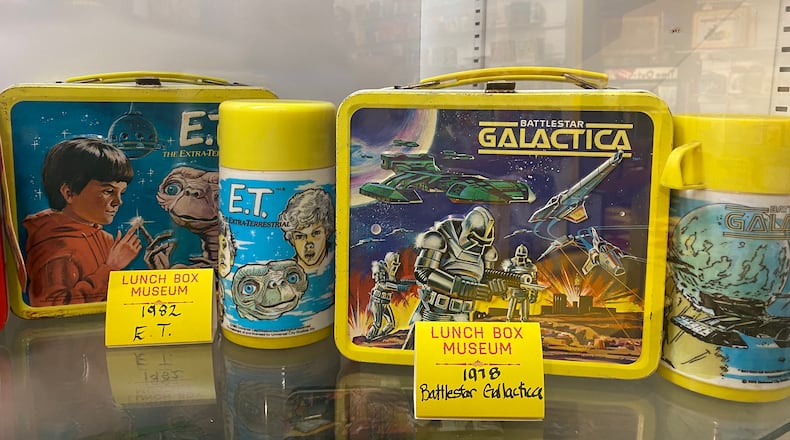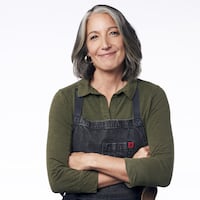When a copy of “Gastro Obscura: A Food Adventurer’s Guide” arrived on my doorstep this fall, I flipped through the 400-page tome of food oddities around the globe, hoping to encounter a wonderment in Georgia.
Sure enough, the Lunch Box Museum in Columbus was sandwiched between a blurb about a longtime funky tropical fruit emporium called Robert Is Here in Homestead, Florida, and a snippet on Moonshine University, a six-day crash course in distilling, held in Louisville, Kentucky.
Credit: handout
Credit: handout
You know what I did next: call the 706 area code. Kaitlynn Griffith picked up. Yes, the Lunch Box Museum really was home to the world’s largest collection of lunch boxes, she said. Founded in 1990 by her grandfather, Allen Woodall, it now holds more than 5,000 metal and plastic boxes, thermoses and coolers.
What’s more, Griffith said, they added other collections to the space this summer. The newly dubbed Columbus Collective Museums also is home to the Royal Crown Cola Museum, Chero-Cola Museum, Nehi Drink Museum, Tom’s Peanut Museum and the Georgia Radio Museum and Hall of Fame.
Sounds like a good reason for a trip to Columbus!
However, museum visitors would do well to keep an open mind. This is not a pristine building, with marble floors and elegant braided rope barriers. Historical artefacts are displayed in the back of Woodall’s River Market Antiques store, which holds everything from bric-a-brac to a shiny red 2009 Tesla — not for sale, because, someday, he wants an electric car museum. The lunch box collection is crammed inside two rooms. A passage leads to the rest of Woodall’s accumulated treasures.
Credit: Ligaya Figueras
Credit: Ligaya Figueras
As Woodall, 87, gave me a tour, two themes emerged: a lifelong passion for cultural artefacts, and pride in the city of Columbus.
His nickname for the Lunch Box Museum is the “Emotional Museum,” because metal boxes bearing the faces of Knight Rider, the Muppets, Peanuts characters, King Kong, Elvis, the Beatles and other teen idols are a trip down memory lane for many a visitor.
Credit: Ligaya Figueras
Credit: Ligaya Figueras
Woodall stopped at a display case holding some of his rarest pieces, including a 1935 Mickey Mouse lunch kit, and a Hopalong Cassidy pail credited with sparking the lunch box craze among kids. “It was the same size as a TV screen in 1951. They were taking the show to school with them. What a marketing plan!” said Woodall, who literally wrote the book on collecting lunch boxes with “The Illustrated Encyclopedia of Metal Lunch Boxes,” published in 1990 and reissued in 2000.
Credit: Ligaya Figueras
Credit: Ligaya Figueras
His most expensive pieces — a metal lunch box and thermos bearing Toppie, the Top Value Stamp Elephant from the ’60s — are valued at nearly $10,000. Most of the collection is not locked behind glass. He invites visitors to touch them, and even purchase his duplicates (price tags average $85-$150).
Woodall recounted how the lunch box industry went plastic in 1986. Urban legend has it that the change was sparked by an effort among Florida moms to push the state legislature to ban the metal boxes, because kids were using them to whack one another. Fact is, a gun-wielding Sylvester Stallone as Rambo marked the end of the Golden Age of the metal collectibles.
Meanwhile, as the birthplace of the soft drink industry, the South produced a lot of advertising and marketing collectibles, and some of that history also lives on at Woodall’s house of curiosities — including the role played by the city of Columbus.
In 1905, pharmacist Claud A. Hatcher began formulating soft drinks in the basement of his family’s wholesale grocery business. Branded as Royal Crown, the first flavor, ginger ale, was followed by strawberry, then root beer.
Credit: Ligaya Figueras
Credit: Ligaya Figueras
Hatcher realized that the biggest profits were in the cola market, so he introduced a cherry-flavored cola, Chero-Cola. When he filed to register Chero-Cola as a trademark in 1914, Atlanta-based Coca-Cola argued that the word “cola” was a trademark infringement, and demanded that it be removed from advertising. The legal dispute ended in 1923, when a judge ruled in Coca-Cola’s favor. Abbreviated to “Chero,” beverage sales suffered under the new name, and it eventually was discontinued.
The same year Coca-Cola won its case against Chero-Cola, Hatcher introduced a fruit-flavored beverage named Melo. After he overheard a salesman refer to a competitor’s soft drink bottle as being “knee-high,” he changed Melo’s name to Nehi.
Credit: Ligaya Figueras
Credit: Ligaya Figueras
In 1932, Hatcher instructed his chemist to develop a cola beverage. He passed away before the new product, Royal Crown, was launched in 1934. Among its claims to fame, RC was the first national soft drink manufacturer to use cans, the first to use 16-ounce bottles and the first to market a diet soda.
A portrait of Hatcher hangs in one corner of the Columbus Collective Museums, surrounded by vintage calendars and other memorabilia that bears Royal Crown branding. Another room depicts Hatcher Grocery as it looked more than a century ago.
Credit: Ligaya Figueras
Credit: Ligaya Figueras
“Atlanta has the Coca-Cola museum,” Woodall said. “I did this for the pride of Columbus, Georgia.”
It’s the same reason that he honors the legacy of Tom’s Foods, a Columbus-based snack company that started in the mid-1920s as the Tom Huston Peanut Co. It was founded by John Thomas “Tom” Huston, the inventor of a mechanical peanut sheller who went on to devise his own roasting process, as well as packaging that extended the shelf life of the peanuts. The Tom’s Foods factory closed this summer after nearly a century of serving as corporate headquarters and the company’s primary manufacturing plant.
“Tom’s Foods employed all these people for so long,” said Griffith, who manages her grandfather’s museums, and the antique market, on a day-to-day basis. “It happened right here, and we want to keep it here.”
As a former radio station owner and son of a journalist father, broadcast radio also is dear to Woodall’s heart. When the Georgia Radio Museum closed its doors in LaGrange in 2020, Woodall agreed to give the nonprofit’s collection space at his place.
“There is nobody doing what he does in town,” Griffith said of her grandfather. “The way he operates, there will always be growth and expansion. The more we can acquire, the more people can enjoy them.”
I so thoroughly enjoyed what Woodall does that I phoned Dylan Thuras, one of the brains behind that “Gastro Obscura” book that led me down this rabbit hole. “Part of the joy of places like that, you almost always get to meet the creator, who is propelled by passion,” he said, after I told him about my discoveries.
The next edition of “Gastro Obscura” will need an update that includes not only lunch box stuff, but all the other Columbus food and drink history that Woodall caretakes — and maybe the suggestion to stop at the city’s century-old Dinglewood Pharmacy, for a soda fountain malt and a bite of its famed scrambled dog.
The Lunch Box Museum. 3218 Hamilton Road, Columbus. 706-332-6378, thelunchboxmuseum.com.
Sign up for the AJC Food and Dining Newsletter
Read more stories like this by liking Atlanta Restaurant Scene on Facebook, following @ATLDiningNews on Twitter and @ajcdining on Instagram.
About the Author
The Latest
Featured









